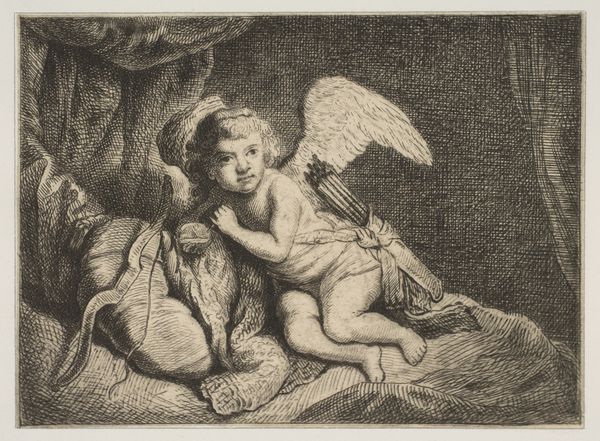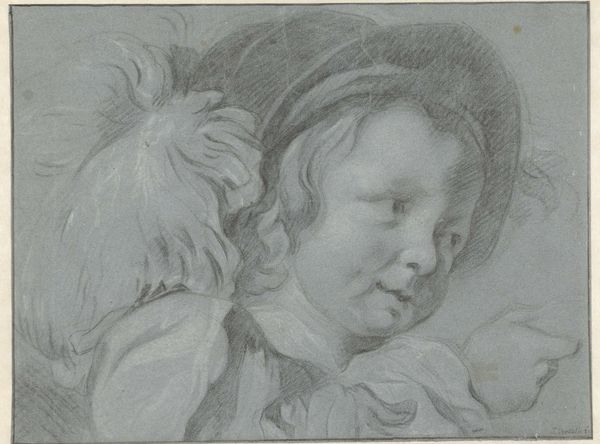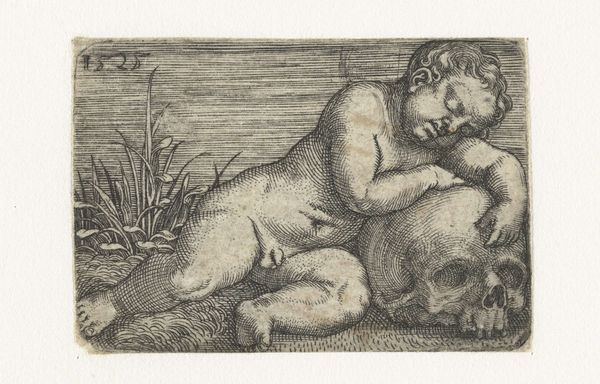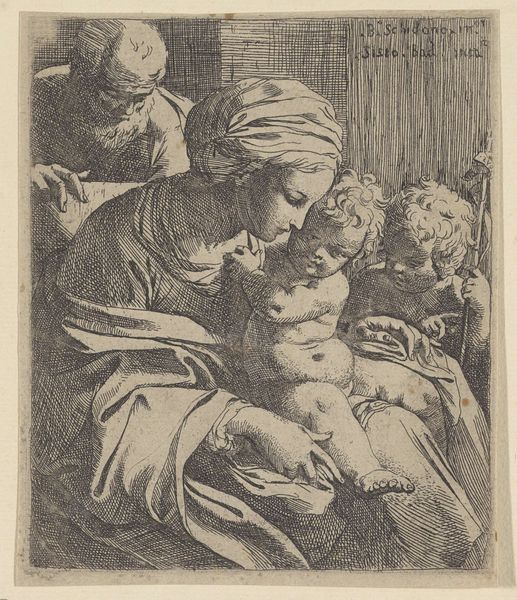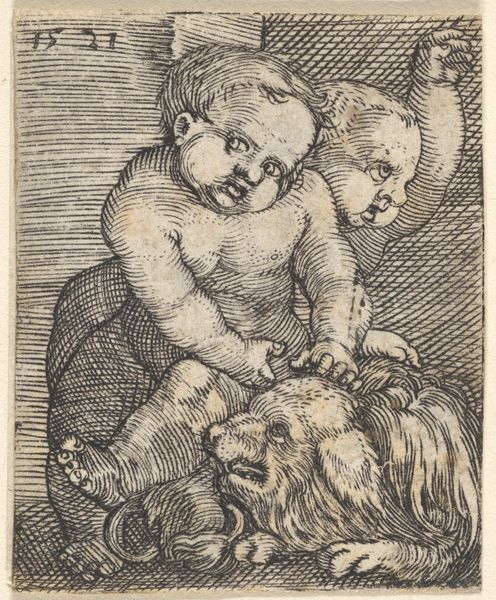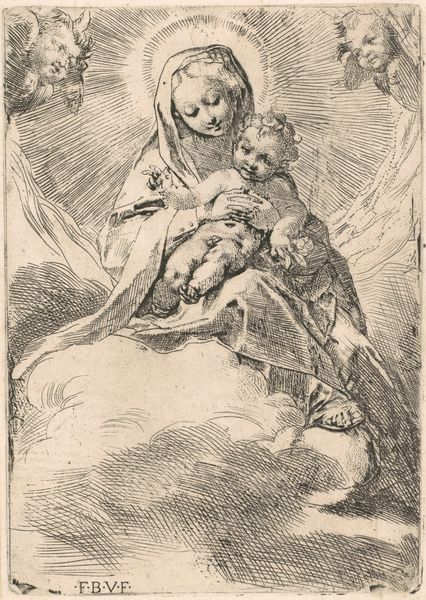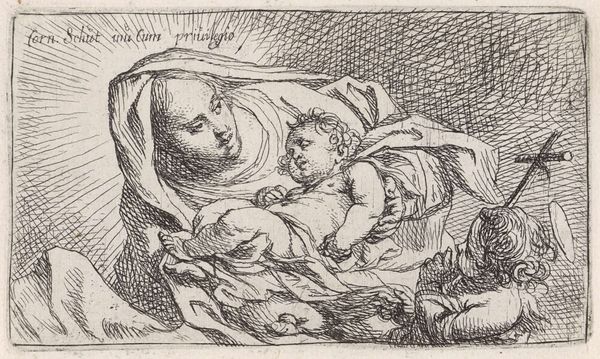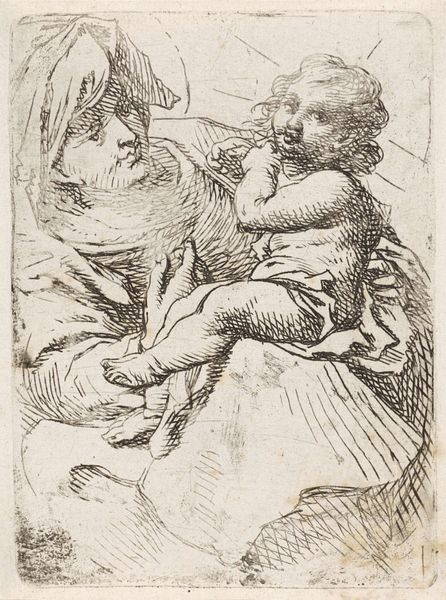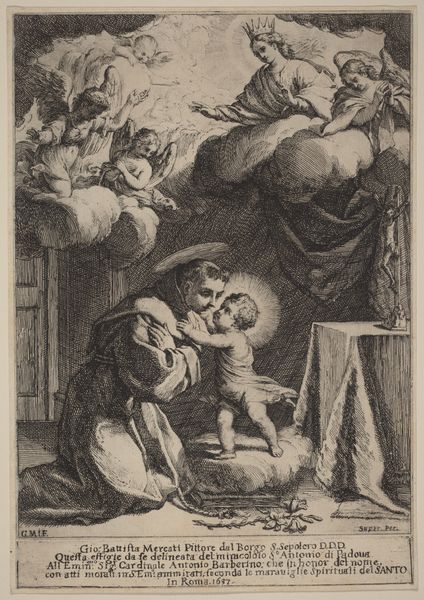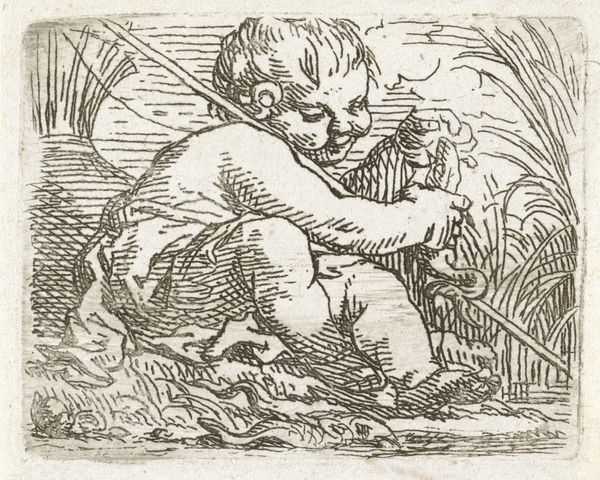
print, etching
#
allegory
#
baroque
# print
#
etching
#
charcoal drawing
#
figuration
#
nude
Dimensions: height 89 mm, width 119 mm
Copyright: Rijks Museum: Open Domain
Curator: My first impression? Sleepy. There’s a strange stillness about this piece, it's subdued in a way that's surprising given the subject. Editor: That's interesting. I see a sort of wistful exhaustion, the aftermath of, perhaps, mischievous activity. This is Isaac de Jouderville’s "Rustende Cupido," or "Resting Cupid," created sometime between 1623 and 1647. Curator: Yes, a Baroque etching, of all things. Makes one almost feel the prickly quality of the lines, like touching a particularly fuzzy caterpillar. The cross hatching, it creates an intriguing tension – so delicate, yet so clearly defined. Editor: I'm struck by how de Jouderville uses established symbolism. The figure of Cupid is a constant reminder of human desire and impulsive choice. Yet, here, the arrows remain still, as does he, hinting perhaps, at the futility or transience of earthly passions. What's equally captivating, however, is the presence of a snake draped at his side. Curator: Ah, yes, and for those unaware, the snake has been coded to imply various things over time and cultural settings... danger, deception, and in the case of early Greeks it was a symbol of medicine and healing; to be rid of ailments. In Christianity it takes on a less positive symbolism representing evil. So…what is it doing next to cupid then? I’m suddenly rethinking that stillness you mentioned! Editor: Well, placing a snake next to cupid in the artwork sets up an interplay of contrasting symbols—youth and vitality juxtaposed against a primal understanding of sin and mortality. I'm drawn to how Baroque art can wrestle with conflicting ideas, revealing, at times, the very struggles of human existence. The serpent may signal both earthly temptations and deeper understandings about the nature of existence. Curator: Temptations and understandings, what a marvelous pairing. Like looking at life itself: a bit worn, but with flashes of insight winking here and there. Editor: Precisely. It prompts one to consider the weight these allegorical figures carry. Jouderville urges the audience to consider just how desire impacts our very perceptions. Curator: Looking at this, you can imagine Cupid later stirring. Perhaps we should not make too much noise ourselves as to let him sleep peacefully just a while longer. Editor: And in the silence, we can ponder the subtle whispers of symbolism that quietly shape our understandings. A fitting conclusion, I believe.
Comments
No comments
Be the first to comment and join the conversation on the ultimate creative platform.
